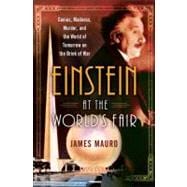
| Map | p. viii |
| Author's Note | p. xiii |
| Prologue: This Brief Paradise from ASH Heaps to Utopia | p. xvii |
| The Devil to Pay | |
| "Why Don't you Do It, Daddy?" | p. 3 |
| Mr. New York | p. 21 |
| A Voluntary Exile | p. 31 |
| The Gardenia of the Law | p. 47 |
| New York World's Fair, Inc. | p. 55 |
| The $8 Murder | p. 77 |
| Why Have A Fair? | p. 87 |
| 106 Degrees in the Shade | p. 97 |
| Panic in Times Square | p. 107 |
| Selling the Fair | p. 117 |
| "Folks, You Ain't Seen Nothing Yet!" | p. 131 |
| Dawn of a New Day: 1939: The First Season | |
| "They Come with Joyous Song" | p. 141 |
| Blackout | p. 157 |
| "I have seen the Future" | p. 167 |
| Visions and Dreamscapes | p. 181 |
| Palestine vs. Pancho Villa | p. 195 |
| Germany Yesterday-Germany Tomorrow | p. 213 |
| Royal Flush | p. 225 |
| "I Never Thought of That!" | p. 233 |
| "You Tell 'Em, Mickey!" | p. 247 |
| The Storm Center of the World | p. 259 |
| "S'Long, Folks!" | p. 273 |
| For Peace and Freedom: 1940: The Second Season | |
| "Hello, Folks!" | p. 285 |
| "This Looks Like the Real Goods" | p. 295 |
| Aftermath | p. 313 |
| Curtains | p. 323 |
| Whalen, Gravisnas, Forbine, and Nobility | p. 335 |
| Epilogue: Ashes to Ashes | p. 343 |
| Acknowledgments | p. 351 |
| Notes and Sources | p. 355 |
| Bibliography | p. 383 |
| Index | p. 387 |
| Table of Contents provided by Ingram. All Rights Reserved. |
The New copy of this book will include any supplemental materials advertised. Please check the title of the book to determine if it should include any access cards, study guides, lab manuals, CDs, etc.
The Used, Rental and eBook copies of this book are not guaranteed to include any supplemental materials. Typically, only the book itself is included. This is true even if the title states it includes any access cards, study guides, lab manuals, CDs, etc.